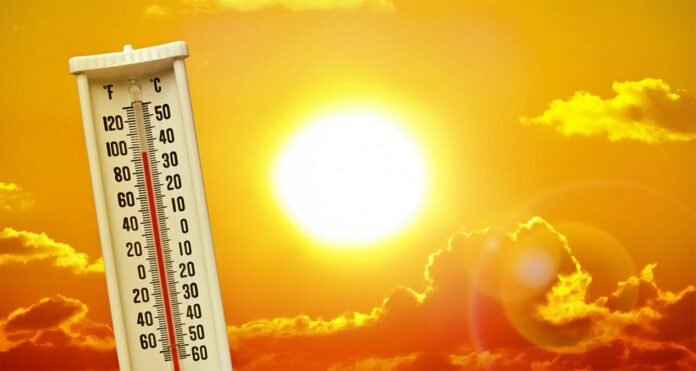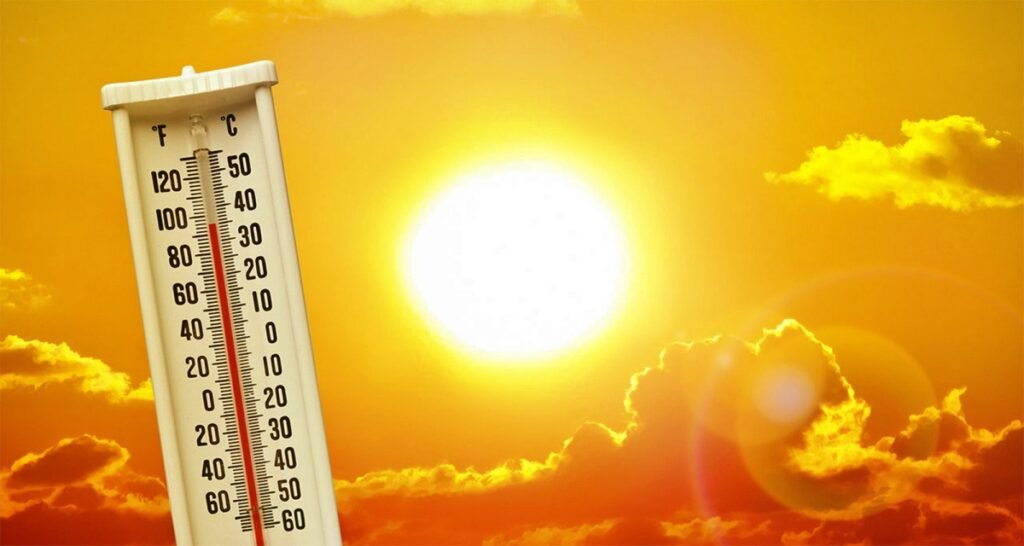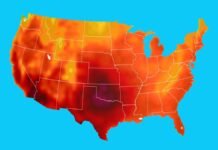
New Delhi: Delhi and adjoining areas have so far escaped the scorching heat with maximum temperatures remaining above normal in most parts of north-west plains, while western Rajasthan, Gujarat, Maharashtra, Madhya Pradesh, Andhra Pradesh, and Telangana Hot winds have started showing their effect in some parts of the state. Dr. Rajendra Kumar of the National Weather Forecasting Center (NWFC) said that at present there is no heatwave warning in Delhi, Punjab, Haryana, and Uttar Pradesh.
He said, “The maximum temperature in Delhi has not crossed 36.7 degrees Celsius and the temperature is likely to remain similar here at least for the next few days. Due to the increase in humidity due to easterly winds, people are facing a lot of trouble. At the same time, there was a slight drop in night temperature during the last 24 hours. On Saturday, the maximum temperature was around 38 degrees Celsius in Haryana, 37 degrees Celsius in Uttar Pradesh, and 35.7 degrees Celsius in Delhi.
Mercury crosses 40 degrees in most parts of Rajasthan
Unlike Delhi, hot weather has taken its toll in the western parts of the country with the temperature hitting the 40 degrees Celsius mark in most parts of western Rajasthan including Jaisalmer, Churu, Bikaner, Barmer, and Pilani. On the other hand, due to dry weather, severe heatwave continues over parts of North-Gujarat, Saurashtra-Kutch, Vidarbha, West Madhya Pradesh, and parts of Andhra Pradesh and Telangana in the south.
The heat showed its effect even in the hilly states
A rise in temperature has also been felt in the hilly states of Jammu and Kashmir, Himachal Pradesh, and Uttarakhand, with the maximum temperature reaching 34 degrees Celsius at some places. Another IMD scientist said, “Dharamsala, Mandi, parts of Chamba and even Solan are definitely warm and the temperature has increased, but overall the weather is pleasant. While in plains the temperature has to touch 40 degrees Celsius to be declared as ‘Loo’, in hill stations it can be declared after crossing 30 degrees Celsius.

What is the reason for the rise in temperature?
The India Meteorological Department (IMD) said that in its seasonal outlook for March-April-May, it had forecast near-normal minimum temperatures in March – especially over many parts of northwest India, some parts of the west and central India. parts, the eastern coastal region and in some areas along the foothills of the Himalayas.
Dr. KS Hosalikar, head of climate research and services at IMD Pune, explained, “We expected the temperature to rise after March. 500 Mb (upper wind chart) clearly shows the development of an anti-cyclone over the central part of India. It is a system that usually forms in the upper atmosphere in early March and changes wind patterns. This pushes a lot of air down, causing the temperature near the ground to warm up.”
Heatwave shocked people in the coastal area
While it is normal for the plains to experience high temperatures, the heatwave in the coastal region has taken many people by surprise. For example, the temperature in Mumbai in the last few days has been recorded close to 40 degrees Celsius. According to scientists, this is largely due to the dominance of easterly winds and a system called the Madden Julian Oscillation (MJO), which is also exerting hard pressure in the third phase.
















































